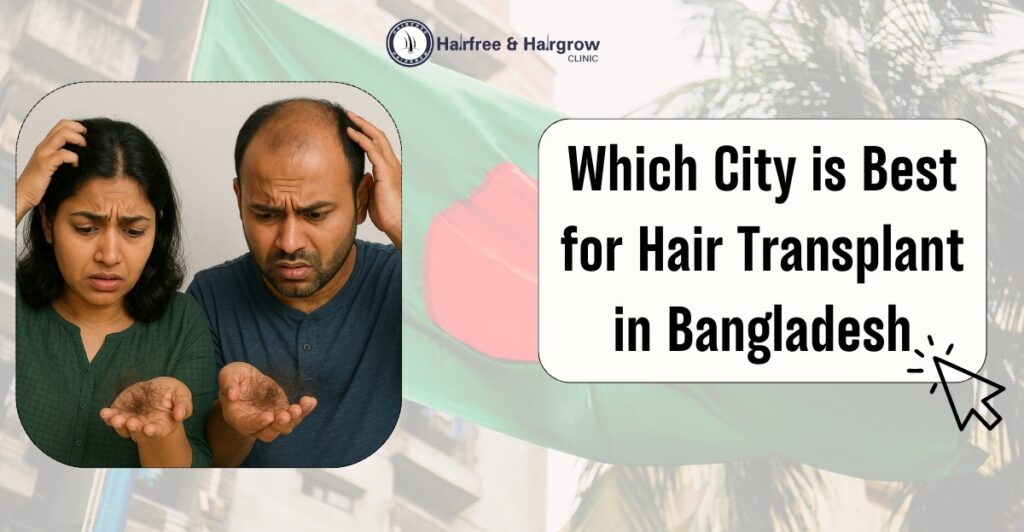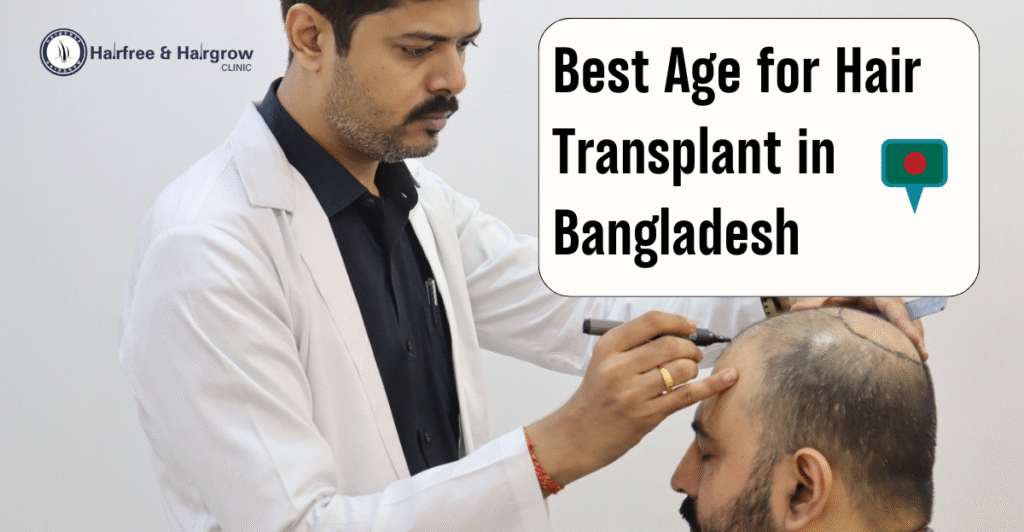Dandruff (pityriasis capitis) is a scalp problem that presents with itchy and flaky skin. It is caused by the rapid loss of skin cells and the overgrowth of the Malassezia fungus. Worldwide, approximately 50% of adults experience dandruff at some point; similar rates have been observed in Bangladesh, although accurate national prevalence statistics are limited.
In Bangladesh, dandruff is very common due to the hot and humid climate, pollution and increased use of chemical products. Factors such as lack of awareness about hygiene in rural areas, stress, nutritional deficiencies and delay in consulting a dermatologist further aggravate the problem.
Table of Contents

Mechanisms by Which Dandruff May Contribute to Hair Loss
2.1 Inflammation & Follicle Disruption
- Chronic inflammation of the scalp (e.g., seborrheic dermatitis) can weaken hair follicles, disrupt the anagen-telogen hair cycle, and accelerate hair loss.
- Studies show that people with dandruff lose 100-300 hairs per day, while people with healthy scalp lose 50-100 hairs per day, which is caused by external abnormalities or inflammation of the hair follicles.
2.2 Fungal Overgrowth & Oxidative Stress
- Excess Malassezia globosa produces oleic acid, breaking scalp balance and triggering inflammation; carriers of this yeast are more likely to experience hair shedding.
- Oxidative stress induced by fungal metabolism may weaken hair strands.
2.3 Scratching & Mechanical Damage
- Intense scratching causes micro‑trauma to follicles and hair shafts, worsening existing hair loss or thinning, especially if underlying causes like seborrheic dermatitis persist.
Can Dandruff Lead to Hair Loss?
1. Scalp Inflammation and Follicle Weakening
Persistent dandruff is often associated with seborrheic dermatitis, a serious inflammatory condition of the scalp. Scalp inflammation can weaken hair follicles, disrupting the hair growth cycle and increasing hair loss.
2. Scratching and Physical Damage
The itching caused by dandruff leads to frequent scratching. Repeated mechanical trauma to the scalp can broken hair shafts and damage follicles, leading to temporary hair loss.
3. Malassezia Overgrowth and Oil Imbalance
The Malassezia fungus feeds on scalp sebum, releasing oleic acid, which can irritate the scalp and trigger inflammatory responses. This process can impair the scalp’s natural barrier and affect hair anchoring strength.
Hair Loss Patterns in Bangladesh: What Makes It Worse?
In the Bangladeshi context, several local factors intensify the effects of dandruff on hair loss:
- Climate: High humidity increases the oiliness of the scalp, encouraging fungal growth.
- Water quality: Hard water in many areas irritates the scalp.
- Lack of awareness: Many patients use over-the-counter shampoos without consulting a dermatologist, which worsens the scalp condition.
- Cultural practices: Use of mustard oil, talcum powder or herbal mixtures can sometimes irritate the sensitive scalp or lead to fungal growth.
Differentiating Between Dandruff-Related Hair Loss and Other Types
While dandruff-related shedding is usually temporary and reversible, other hair loss types need different interventions:
- Telogen Effluvium: Triggered by stress, illness, or nutritional deficiencies.
- Alopecia Areata: An autoimmune condition causing patchy hair loss.
- Androgenetic Alopecia: Male or female pattern baldness with genetic roots.
- Tinea Capitis: A fungal infection that mimics dandruff but causes patchy hair loss.
Proper diagnosis by a dermatologist is crucial for determining whether dandruff is a primary contributor or a coinciding symptom.
How to Treat Dandruff and Control Hair Fall
1. Medicated Shampoos
Anti-dandruff shampoos with active ingredients like ketoconazole, zinc pyrithione, selenium sulfide, and salicylic acid help control the fungal load and inflammation.
2. Scalp Hygiene
Regular washing with lukewarm water and gentle scalp massage can reduce oil buildup and irritation. Avoiding harsh chemical treatments also helps maintain scalp balance.
3. Nutritional Support
A diet rich in zinc, vitamin D, B-complex, and omega-3 fatty acids supports scalp health. In Bangladesh, deficiencies in these nutrients are not uncommon.
4. Medical Treatments
For more resistant cases, treatments such as topical corticosteroids, antifungal lotions, minoxidil, and even PRP (Platelet-Rich Plasma) therapy may be advised based on diagnosis.
Why Choose Hair Free & Hair Grow Bangladesh Clinic for Hair Loss and Dandruff Treatment?
Expert Diagnosis and Personalized Care
Hair Free & Hair Grow Bangladesh offers precise dermatological assessment to determine the root cause of your hair loss, including whether dandruff is a primary factor.
Advanced Treatment Options
The clinic combines modern dermatological protocols with evidence-based solutions such as
- Medicated anti-dandruff scalp therapies
- Minoxidil-based regimens for hair growth
- PRP therapy for follicular rejuvenation
- Microneedling and LLLT (Low-Level Laser Therapy)
Local Expertise with International Standards
Being based in Bangladesh, the clinic’s experts understand local scalp conditions, climate-related triggers, and hair care practices. Treatment protocols are adapted for both urban and rural patients.
Long-Term Hair Health Management
Regular follow-up, lifestyle coaching, and customized scalp care plans ensure long-term recovery and prevention of hair fall recurrence.
Conclusion
In Bangladesh, dandruff and hair loss commonly occur together, but dandruff alone does not directly cause hair loss. Instead, inflammation, fungal overgrowth, scratching, and other conditions combine to accelerate hair loss.
Effective control of dandruff, as well as comprehensive testing and personalized regrowth treatments, are crucial. For holistic, locally customized care with proven results, Hair Free & Hair Grow Bangladesh Clinic offers complete solutions for all types of hair loss, from dandruff-related thinning to alopecia and beyond.
Research Papers & Further Reading Links
- Nudging Hair Shedding by Antidandruff Shampoos: A Comparison of 1% Ketoconazole, 1% Piroctone Olamine, and 1% Zinc Pyrithione Formulations
https://www.researchgate.net/publication/5350740
- Examining Alopecia Through Selected Case Studies in Bangladesh

Written By
Medical Officer & Hair Transplant Surgeon
Dr. Nazmin Sultana Nipa is a distinguished hair transplant doctor in Bangladesh, known for her advanced skills in hair restoration. As a Medical Officer and Hair Transplant Surgeon, Dr. Nipa combines her extensive experience in the field with a focus on transparency and patient-centered care.
Disclaimer
We’ve made all possible efforts to ensure that the information provided here is accurate, up-to-date and complete, however, it should not be treated as a substitute for professional medical advice, diagnosis or treatment. See Detailed Disclaimers Here.



